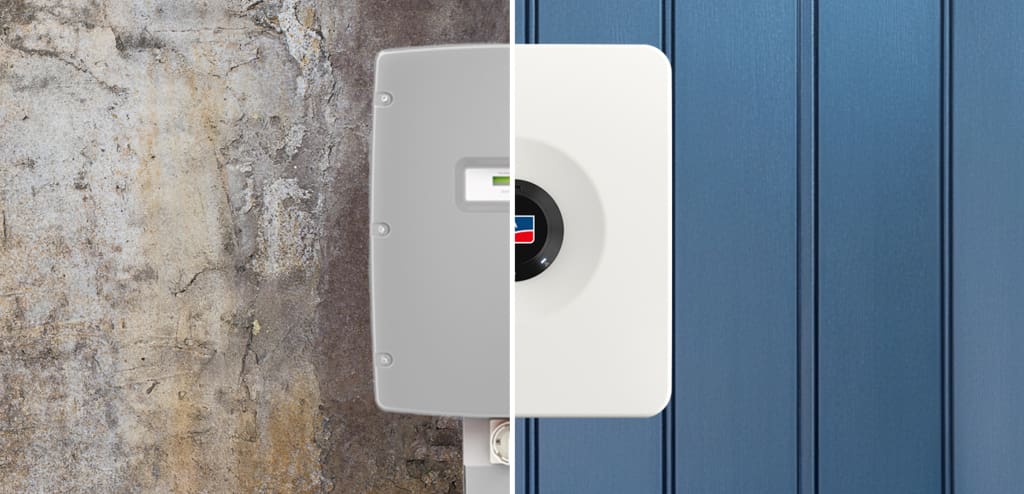SMA Sunny Tripower CORE1 Inverters: Repowering Ready

Part II: Maximize and Protect
In the first installment of this series, we focused on MPP voltage. This post will explain how to maximize the number of strings connected to a string inverter and protect the inverter from damage. The strings are limited by the number of terminals and the maximum short-circuit current of each individual maximum power point tracker (MPPT).
There are ultimately two advantages of checking the short-circuit current: to maximize the number of strings per inverter and to prevent inverter damage in the event of a string fault with a high DC current. Compared to 600VDC systems, modern PV systems have longer strings with higher MPP voltage, requiring fewer strings in parallel to reach the same capacity. Contemporary inverters can, as a result, handle a comparatively higher voltage with limited current capacities.
Still, a new inverter placed into an existing system must match the current requirements. There are two numbers to check to ensure that’s the case:
- Maximum operating input current
- Maximum short-circuit current of the inverter/MPPT
First, system age is an important consideration since older modules may not reach their maximum operating input current, even under the best conditions. In most cases, the DC/AC ratio has more influence on clipping than the maximum operating input current. Customers have, however, in some repowering projects, experienced up to a 20% higher module MPP current than the inverter’s maximum operating input current without a loss in production.
It’s also important to focus on the maximum short-circuit current of each inverter MPPT. As mentioned above, there are two reasons to investigate this value. Let’s dive into the specifics of how and why to ensure you’re ready for repowering.
Ready to Repower?
One reason to repower is to protect the MPPT of the inverter from damaging current. These elements include the maximum short circuit current per MPPT, the safety factor and the short-circuit current of the chosen module of two parallel strings.
Let’s look at an example using the SMA CORE1:
- Module type: Sunmodule Plus SW290 MONO from SolarWorld
- Standard safety factor: 1.25
- Maximum short-circuit current: 9.97A
The maximum short-circuit current of the PV design is then calculated by multiplying the short-circuit current of the module (9.97A) by the number of strings (2) and by the safety factor (1.25). Multiplying these values equals 24.93A. The total must be less than the maximum short-circuit current of one MPPT of the CORE1, which is 30A.
Thus, this design works and matches the inverter limits, allowing connection of two strings directly to one MPPT. Three strings would risk permanent damage to the inverter.
The second reason to check the maximum short-circuit current per MPPT is so you can calculate the maximum number of strings that can be connected to each MPPT. In the aforementioned scenario, two strings are the maximum allowed per MPPT. Some installed modules in older designs, however, have a lower short-circuit current. In such cases, the maximum short-circuit current per MPPT must be divided by the safety factor and by the maximum short-circuit current of the modules installed.
When determining the maximum number of strings to connect to one MPPT in parallel, you can round the results down. Let’s look at an example:
- Module type: Ultra 175-PC from Shell
- Maximum short-circuit current: 5.43A
And here’s the math: The maximum short-circuit current of the MPPT (30A) divided by the safety factor (1.25) and by the short-circuit current of the module (5.43) results in 4.42 strings. Once rounded down, it shows that a maximum number of four strings can be connected in parallel to one MPPT.

Why calculate the maximum number of strings, especially when repowering?
The existing strings are typically very short (about 10 to 14 modules), which results in a low string voltage. Combined with a low current, those strings have a low power output. Using the example above with the Shell modules, a string length of 12 modules with two strings per MPPT puts out 25.2kWp of total power under test conditions. The SMA CORE1, 33-US can handle up to 50.0kWp (DC).
Adding more strings until the chosen DC/AC ratio has been reached makes full use of the inverter capacity—underscoring why this is the second important reason to check on the maximum short-circuit current of the MPPT. Keep in mind, though, when more than two strings operate in parallel, each string requires protection, which is achieved by adding string fuses.
Now that you know how to correctly check both numbers, your repowering is set up for success—ensuring your system will be safe and efficient.




thank you for this very interesting article. Unfortunately I missed the previous ones.
In think we also have to make sure that the array voltage does not work too close to the minimum MPPT input voltage